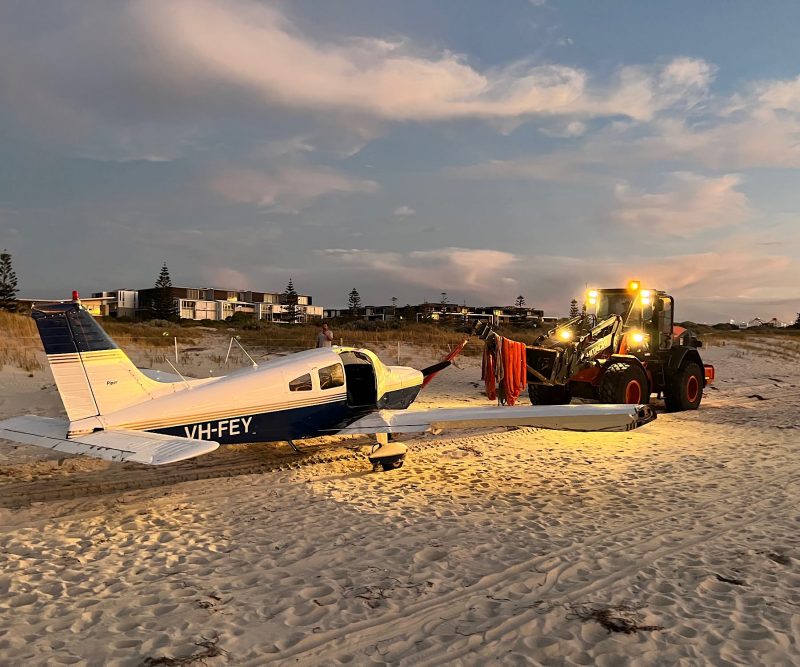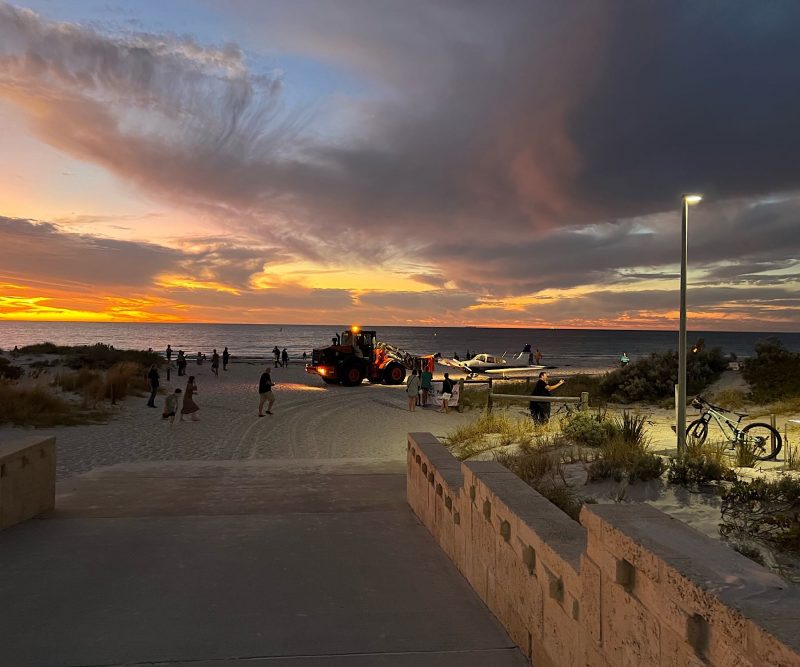You’ll remember our story on the forced ditching of an aircraft off Leighton Beach in April this year had a happy ending, with pilot and passenger emerging unscathed.

Leighton Beach April 2023. Credit John McGlue
But the postscript this week was more sobering.
The Australian Transport Safety Bureau has now confirmed the aircraft had not suffered engine failure as some initially speculated, rather the engine had run out of juice because the fuel tanks weren’t properly turned on.
It’s the same issue that brought down John Denver’s plane in 1997, with fatal consequences. Fortunately, a vastly different outcome at Leighton back in April.
It was quite the sight in the final throes of last summer on Fremantle’s northern beaches, the Piper Archer single engine aircraft ditching in shallow water on a mercifully calm day.

Source: ATSB Image extracted from Channel 9 News footage
Hours later, it was towed south along the beach and up into the car park at the Fremantle Surf Lifesaving Club, looking more like it had just been through the car wash than a full-on ditch into the ocean.

Leighton Beach April 2023. Credit John McGlue
The landing itself was remarkably well executed, the plane amazingly intact, pilot Michelle Yeates and her 15 year old son swimming the short distance to shore.
Michelle’s account was one of engine failure, the sudden loss of power that pilots dread, an inability to regain power in the no-time she had before lining up for an emergency landing.
The ATSB found the engine failure was due to fuel starvation, the switch for the left wing tank turned to OFF, while the right wing tank emptied out. There was sufficient fuel on board, it just wasn’t making its way to the engine.
WA’s most popular general aviation rides, the Cessna family juniors led by the C172, have a ’BOTH’ setting that keeps the juice flowing without need to actively manage and switch mid-air. Not so the Piper PA-28 Michelle was flying that day.
The ATSB said Michelle’s first thought was to land into wind on Leighton Beach, an option that quickly evaporated because of people on the beach. The ocean was the next best – and only – alternative.
It also said the vital emergency procedures on an engine failure should include a fuel check, which hadn’t happened as it should on the day, when the engine initially subsided to idle a few times, momentarily recovered, but then cut completely.
The Leighton Beach report is one that will be read with great interest and in fine detail by aviators across Australia, and no doubt make its way into training programs everywhere.
* Words and photographs by John McGlue
WHILE YOU’RE HERE –
PLEASE HELP US TO GROW FREMANTLE SHIPPING NEWS
FSN is a reader-supported, volunteer-assisted online magazine all about Fremantle. Thanks for helping to keep FSN keeping on!
** Don’t forget to SUBSCRIBE to receive your free copy of The Weekly Edition of the Shipping News each Friday!







